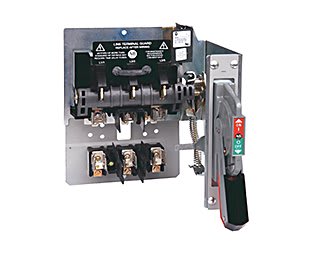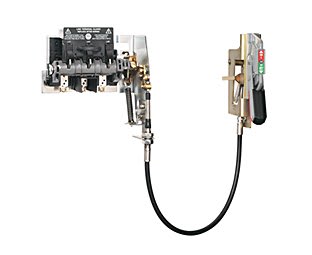PaulKraemer
Electrical
Hi,
I am trying to design an Industrial Control Panel that will replace an older Control Panel that is currently being used in a machine control application. I have posted a few questions related to this project, but I thought this topic is different enough that it might be worthy of its own thread.
A previous thread I started in the hope of determining whether I should fuse my main disconnect resulted in me learning that the type of disconnect I had in mind was not suitable for use as the Main Disconnect in an Industrial Control Panel according to UL guidelines. Realizing my ignorance on UL guidelines, I started reading UL508A. I got up to the section covering disconnects, and figured I would start trying to find a 3-pole disconnect rated for 80 amps that is UL508A compliant. I seemed to reach a dead end with my usual supplier, so I figured I'd call Automation Direct. I figured I'd still consider both fusible and non-fusible disconnects. I found out that they have an 80 amp non-fusible disconnect that is UL508 compliant (I'm not sure about UL508A). When I asked about a fusible disconnect, the closest they could offer was one that is UL98 compliant rather than UL508.
Googling UL98 vs UL508 made me think that UL98 devices might be "better" or "safer" than UL508 devices, but they are usually larger or more expensive. (Please correct me if I am wrong). Before I look too seriously at one or the other, I am hoping someone here might be able to give me a push in the right direction.
Considering that I am designing an Industrial Control Panel for a machine control application, and that I hope to be as compliant as possible with regulatory authorities in the USA, should I be looking for a UL98 compliant disconnect or a UL508 compliant disconnect. And should I be concerned about the distinction between UL508 and UL508A compliance?
Any advice will be greatly appreciated.
Thanks in advance,
Paul
I am trying to design an Industrial Control Panel that will replace an older Control Panel that is currently being used in a machine control application. I have posted a few questions related to this project, but I thought this topic is different enough that it might be worthy of its own thread.
A previous thread I started in the hope of determining whether I should fuse my main disconnect resulted in me learning that the type of disconnect I had in mind was not suitable for use as the Main Disconnect in an Industrial Control Panel according to UL guidelines. Realizing my ignorance on UL guidelines, I started reading UL508A. I got up to the section covering disconnects, and figured I would start trying to find a 3-pole disconnect rated for 80 amps that is UL508A compliant. I seemed to reach a dead end with my usual supplier, so I figured I'd call Automation Direct. I figured I'd still consider both fusible and non-fusible disconnects. I found out that they have an 80 amp non-fusible disconnect that is UL508 compliant (I'm not sure about UL508A). When I asked about a fusible disconnect, the closest they could offer was one that is UL98 compliant rather than UL508.
Googling UL98 vs UL508 made me think that UL98 devices might be "better" or "safer" than UL508 devices, but they are usually larger or more expensive. (Please correct me if I am wrong). Before I look too seriously at one or the other, I am hoping someone here might be able to give me a push in the right direction.
Considering that I am designing an Industrial Control Panel for a machine control application, and that I hope to be as compliant as possible with regulatory authorities in the USA, should I be looking for a UL98 compliant disconnect or a UL508 compliant disconnect. And should I be concerned about the distinction between UL508 and UL508A compliance?
Any advice will be greatly appreciated.
Thanks in advance,
Paul


